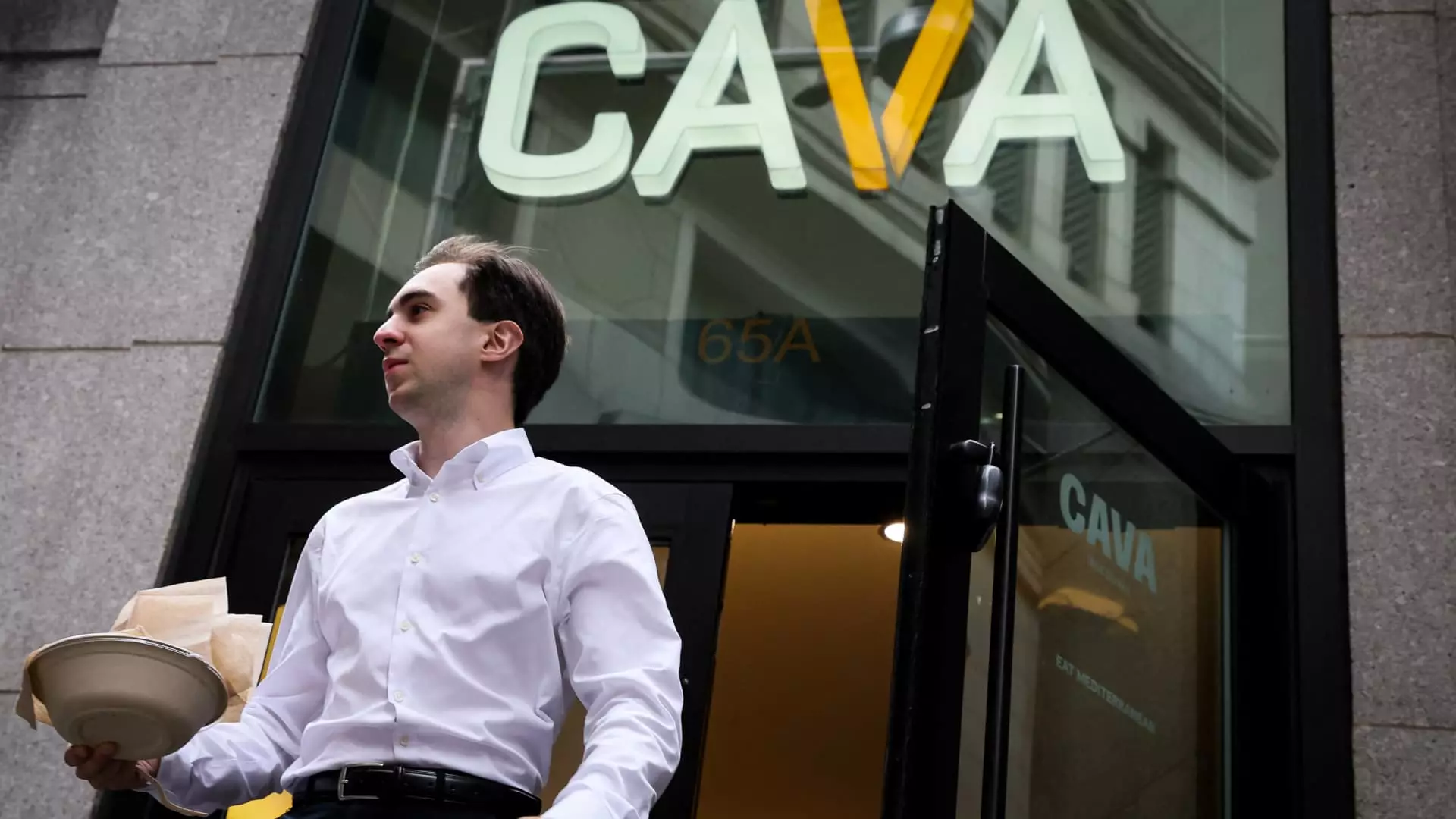As recent years have shown, the restaurant industry is navigating stormy economic waters. Consumers have become increasingly cautious with their spending, forcing brands to rethink their strategies fundamentally. Loyalty programs have surged to the forefront as a crucial tool—viewed not just as a marketing tactic but as a lifeline. However, this reliance raises questions about their sustainability and true effectiveness. Are these programs fostering genuine loyalty, or are they merely masking deeper issues within the sector?
Loyalty initiatives, once considered optional perks, now serve as the backbone of many restaurant brands’ customer retention strategies. Companies like Starbucks, Chipotle, and Cava have heavily invested in these programs, knowing full well that in tough economic times, consumer attention gravitates towards perceived value. That this shift is happening now is understandable; consumers’ wallet shares are shrinking, and brands are desperate to keep their customer base engaged. Yet, this temptation to throw more rewards at customers may be an overcorrection. Relying excessively on discounts and freebies can erode profit margins, creating a fragile foundation that may not withstand prolonged economic downturns.
The danger lies in transforming these programs into superficial bandages that don’t address underlying business health. When customers are lured primarily by discounts, the brand risks devaluing its core perception and diminishing the willingness to pay full price later on. Moreover, existing loyalty structures often promote habit-forming behavior that, while beneficial for short-term engagement, could lead to a complacent customer base that expects freebies rather than genuine quality or service.
The Illusion of Loyalty: Are Rewards Truly Building Customer Affinity?
Data shows that loyalty members tend to visit restaurants more frequently—up to twice as often—and spend more per visit. At face value, this appears promising. However, a critical perspective reveals that this isn’t necessarily a sign of authentic brand allegiance. Instead, it could signify a narrow incentive to capitalize on points and freebies, rather than a deep-rooted preference for the brand.
For example, Starbucks reports that over 59% of transactions in its U.S. stores are now driven by rewards members. While this is an impressive engagement metric, it also suggests that their entire business model is increasingly dependent on these loyalty levers. What happens if the program’s appeal wanes? The risk is that a significant portion of sales becomes contingent on ongoing rewards rather than customer satisfaction or product excellence.
Furthermore, brands are continuously tweaking their rewards strategies—cancelling popular perks like Starbucks’ reusable cup bonus and replacing them with different point schemes. These adjustments, though necessary at times, signal the fragile relationship between brands and consumers. Loyalty programs are like fragile bridges; they’re built on ongoing incentives, yet they’re easily broken when the perceived value diminishes or the rewards become less appealing.
Real loyalty should stem from a sense of shared identity, quality, and consistent value, not just transactional incentives. If brands focus solely on short-term engagement through rewards, they risk cultivating a customer base conditioned to expect freebies—customers who are less resistant to price hikes and less committed when perks are withdrawn.
Risks and Unintended Consequences of Over-Reliance on Rewards
From a center-right perspective, it’s clear that excessive dependence on loyalty schemes can distort a company’s long-term strategic vision. While short-term gains, such as increased frequency or digital sales boosts, are attractive, they come with significant risks. For one, promotional giveaways and rewards often eat into slim margins, especially for quick-service restaurants operating on tight profit margins.
Moreover, an overemphasis on loyalty programs could inadvertently encourage price wars or unsustainable freebies, leading to a race where brands compete by offering more free products and discounts. This not only harms profitability but can also dilute brand perception, transforming once-premium or reputable brands into mere discount providers.
The case of Cava illustrates this trend. It’s bucking the industry apart by innovating its rewards to encourage flexibility and engagement rather than just discounts. Yet, even such creative programs are susceptible to being undercut by competitors willing to ramp up freebies or incentives, undermining profitability and long-term viability.
Additionally, the focus on digital and app-based loyalty schemes is increasingly marginalizing the importance of on-site quality and human interaction. In an age where consumers crave authenticity and personalized service, brands risking over-reliance on rewards systems may neglect the vital elements that foster genuine customer loyalty—trust, quality, and connection.
The Future of Loyalty in a Shaky Economy: A Reckoning
The current trend suggests an industry that is experimenting with loyalty programs out of necessity rather than conviction. Brands that have effectively reimagined these programs—as Cava has—are likely to withstand the turbulence better. Yet, the overarching concern remains: Are they building sustainable relationships, or just temporary engagement?
The danger in this rush to reward is ignoring the fundamental principle that true loyalty is earned through excellence, consistency, and genuine value—elements that no amount of freebies can replace. As economic conditions tighten, the cracks embedded in a reward-heavy model become more apparent. Margins shrink further, consumer trust diminishes when freebies seem to outweigh quality, and brands risk becoming indistinguishable in a crowded market driven by discounts and gimmicks.
In this environment, the real strategic challenge lies in balancing the immediate need for engagement with the long-term goal of brand integrity. Loyalty programs should serve as complements to authentic experiences, not substitutes for them. Without this nuanced approach, restaurants risk falling into a destructive cycle—where loyalty is transactional, profits are squeezed, and customer relationships fragment under the weight of overcomplex and overpromoted reward schemes.

